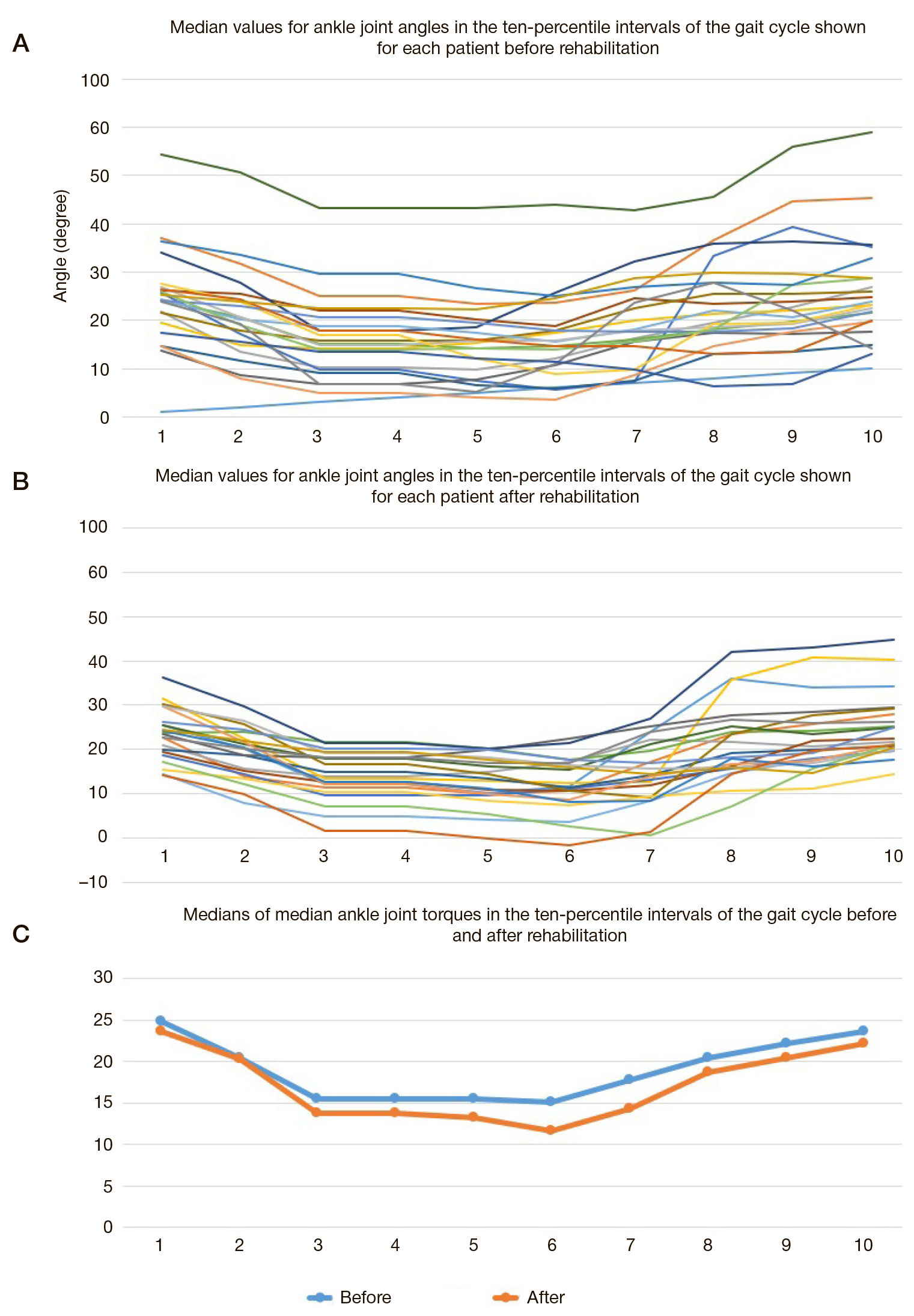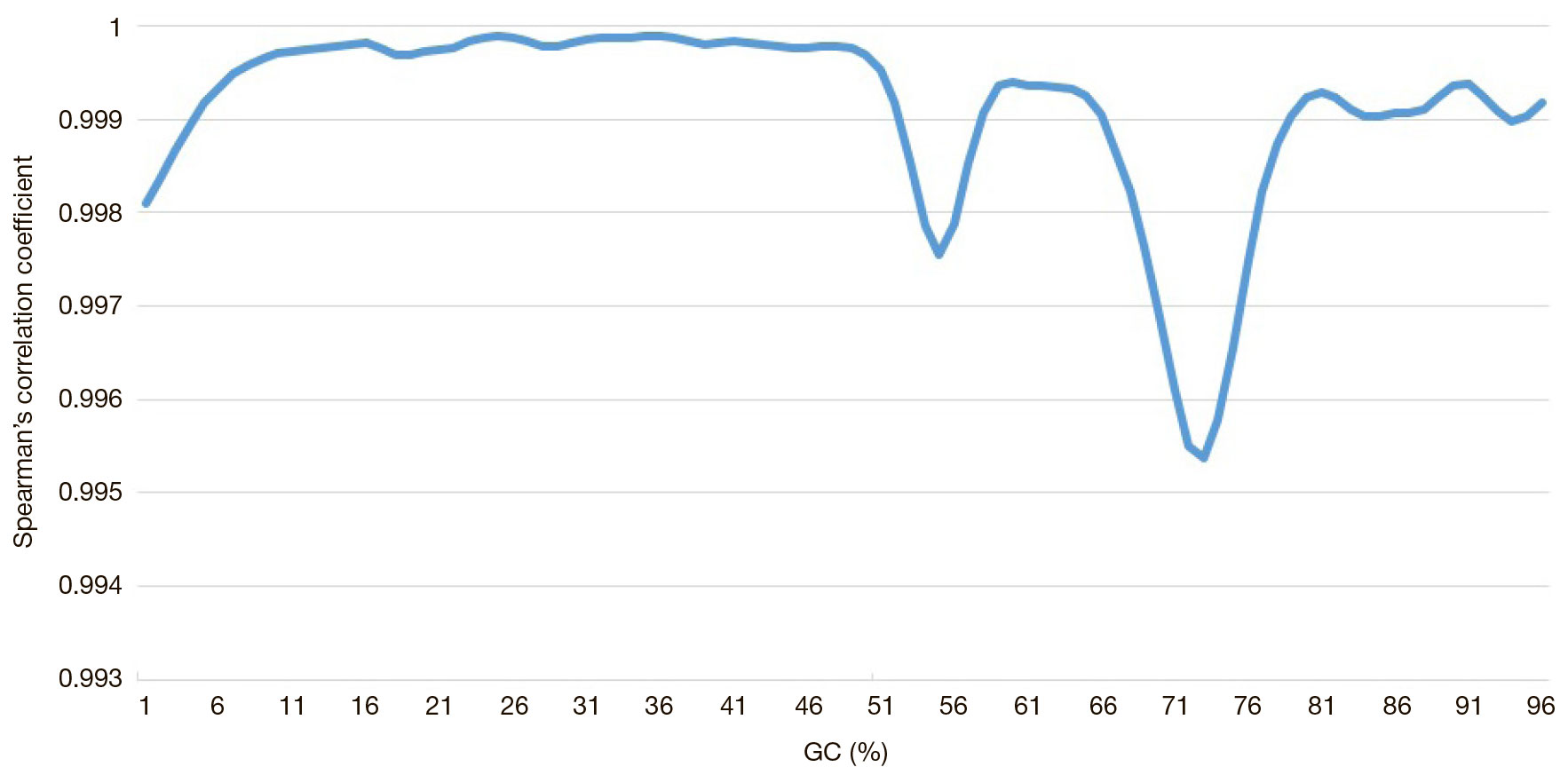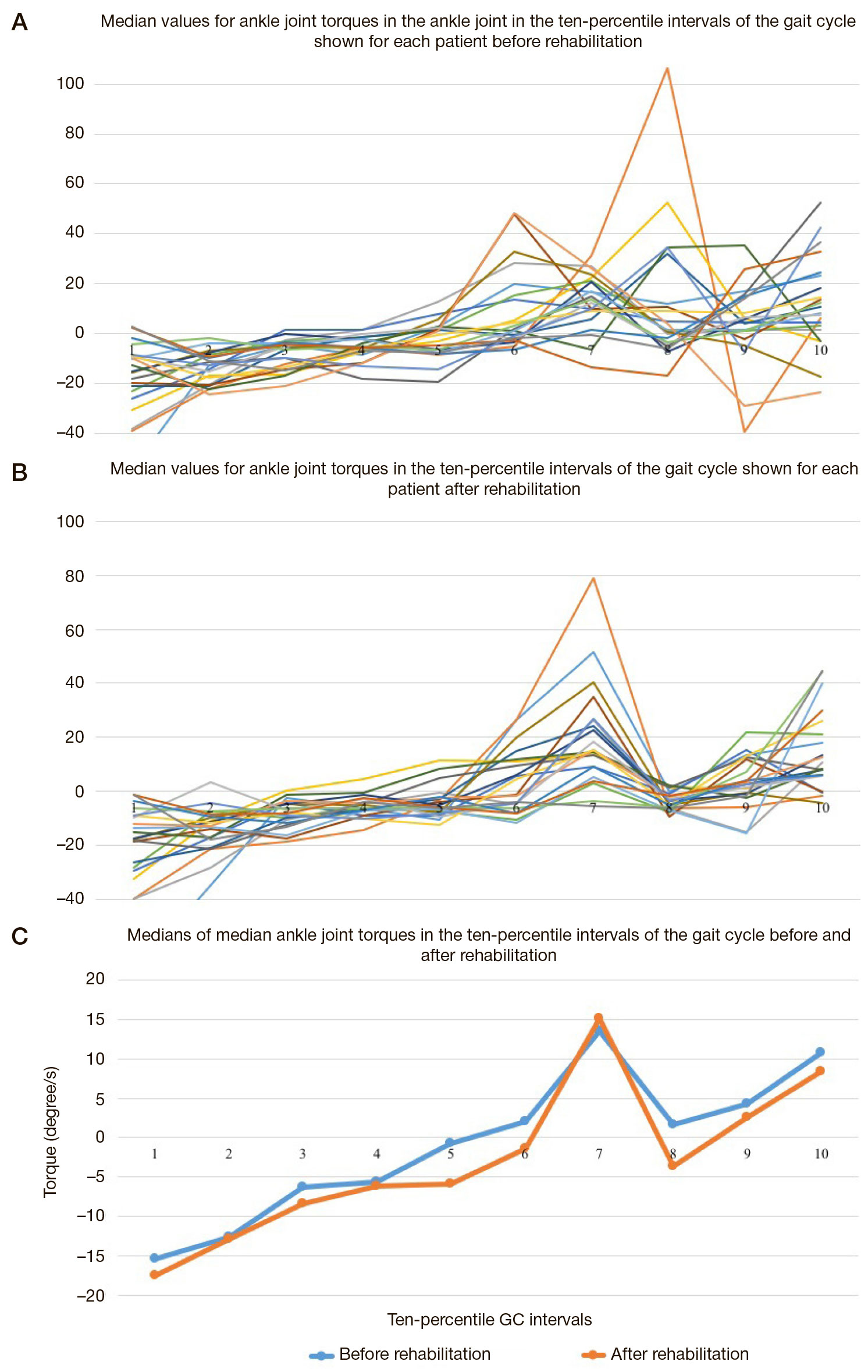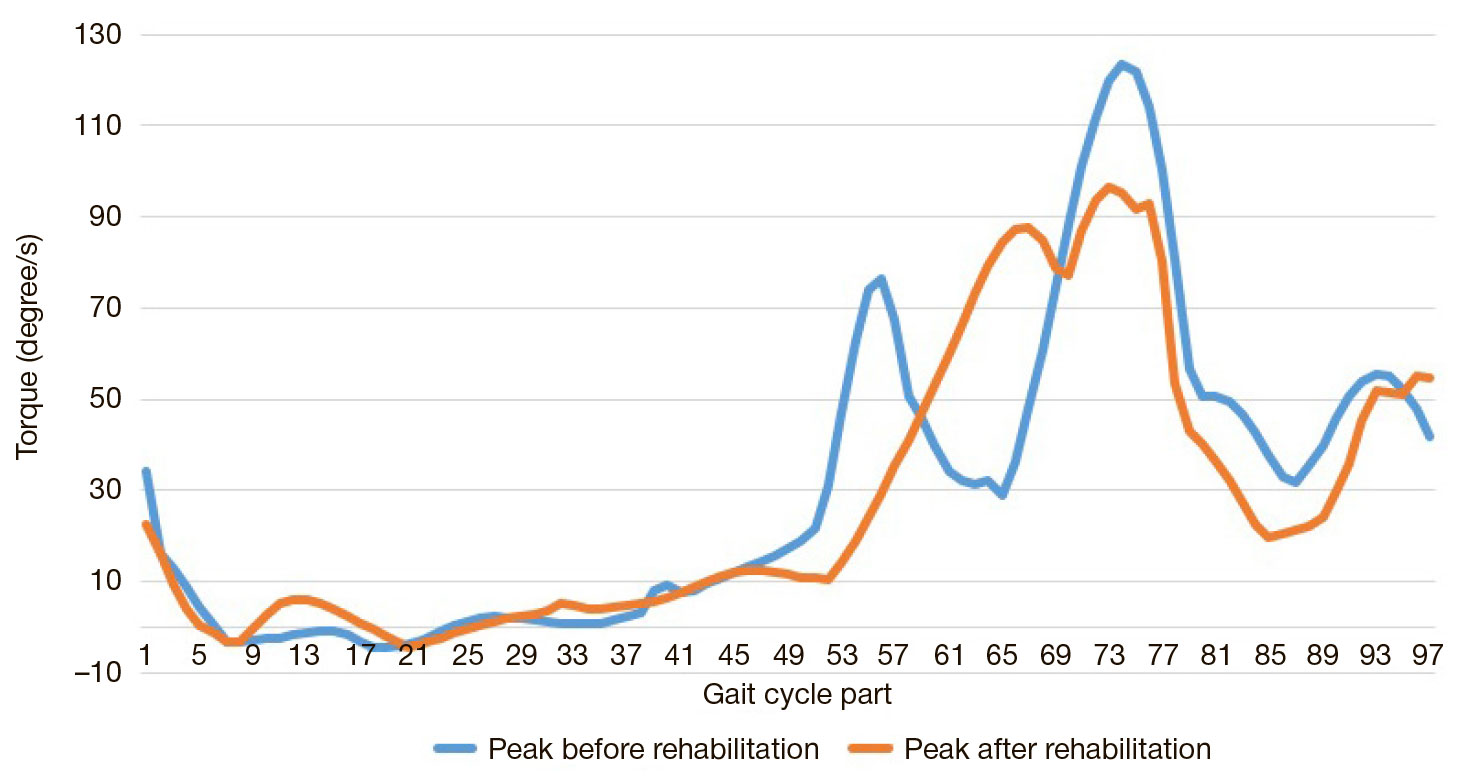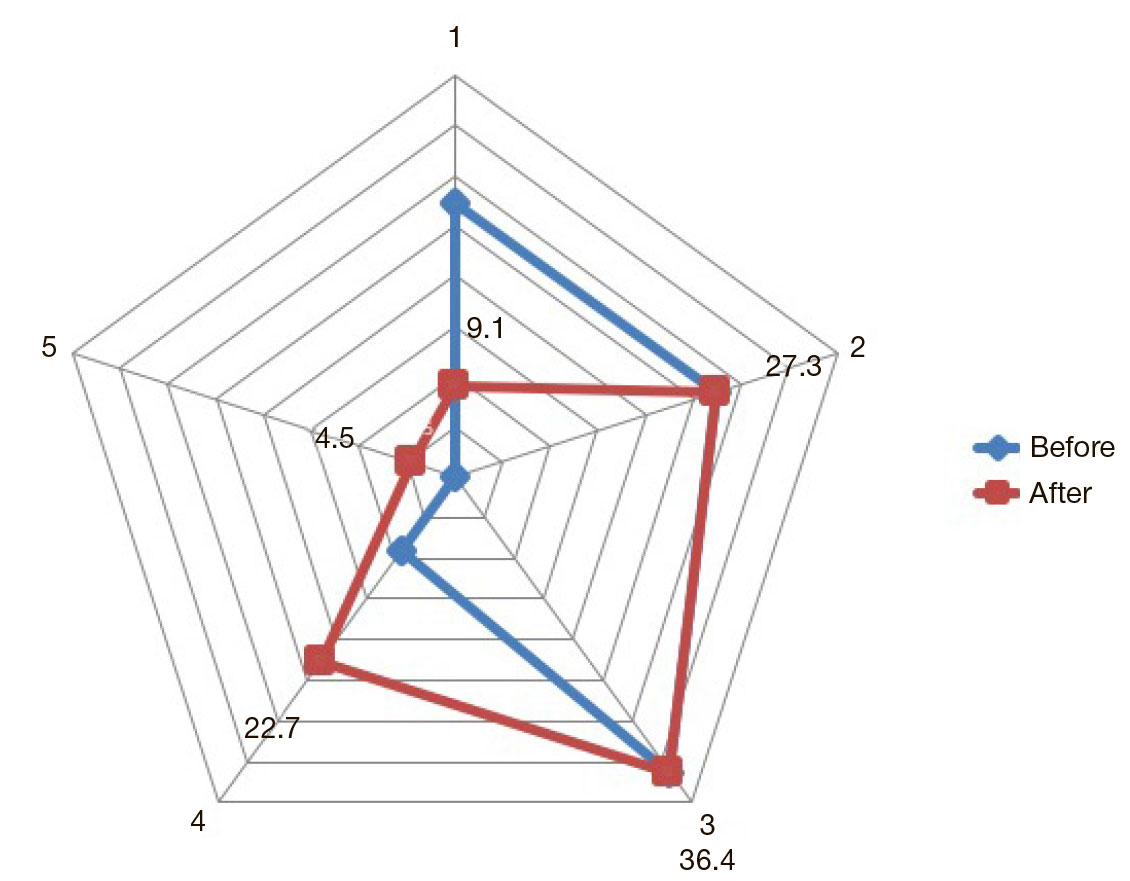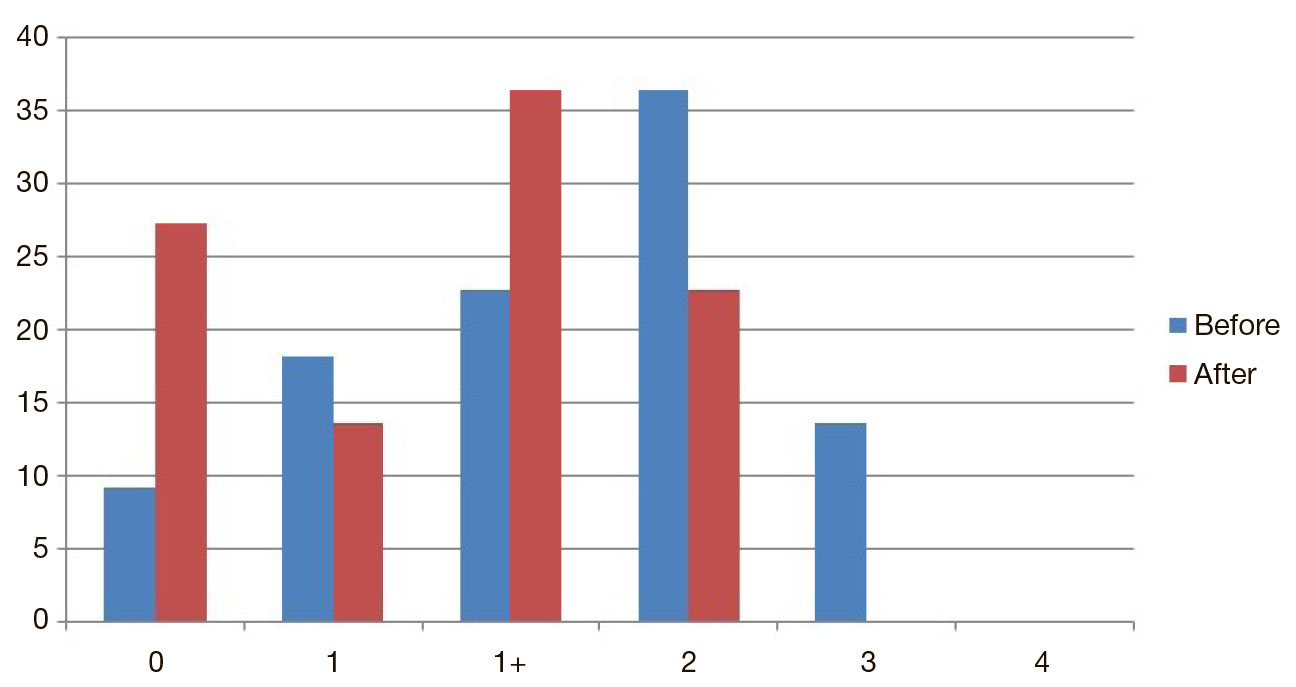
This article is an open access article distributed under the terms and conditions of the Creative Commons Attribution license (CC BY).
ORIGINAL RESEARCH
Effect of robot-assisted gait training on biomechanics of ankle joint in patients with post-stroke hemiparesis
Research Center of Neurology, Moscow, Russia
Correspondence should be addressed: Anton S. Klochkov
Volokolamskoe shosse, 80, Moscow, 125367; ur.ygoloruen@vokhcolk
Funding: this study was state-funded.
Compliance with ethical standards: the study was approved by the Ethics Committee of the Research Center of Neurology (Protocol № 14/09 dated December 23, 2009). Informed consent was obtained from all study participants.
Author contribution: Klochkov AS — study planning, patient recruitment, literature analysis, data interpretation, manuscript preparation; Zimin AA — statistical analysis, data interpretation, manuscript preparation; Khizhnikova AE — literature analysis, data interpretation, manuscript preparation; Suponeva NA, Piradov MA — manuscript preparation.
